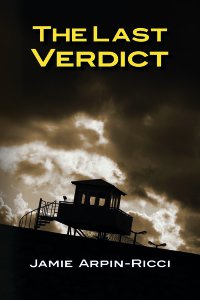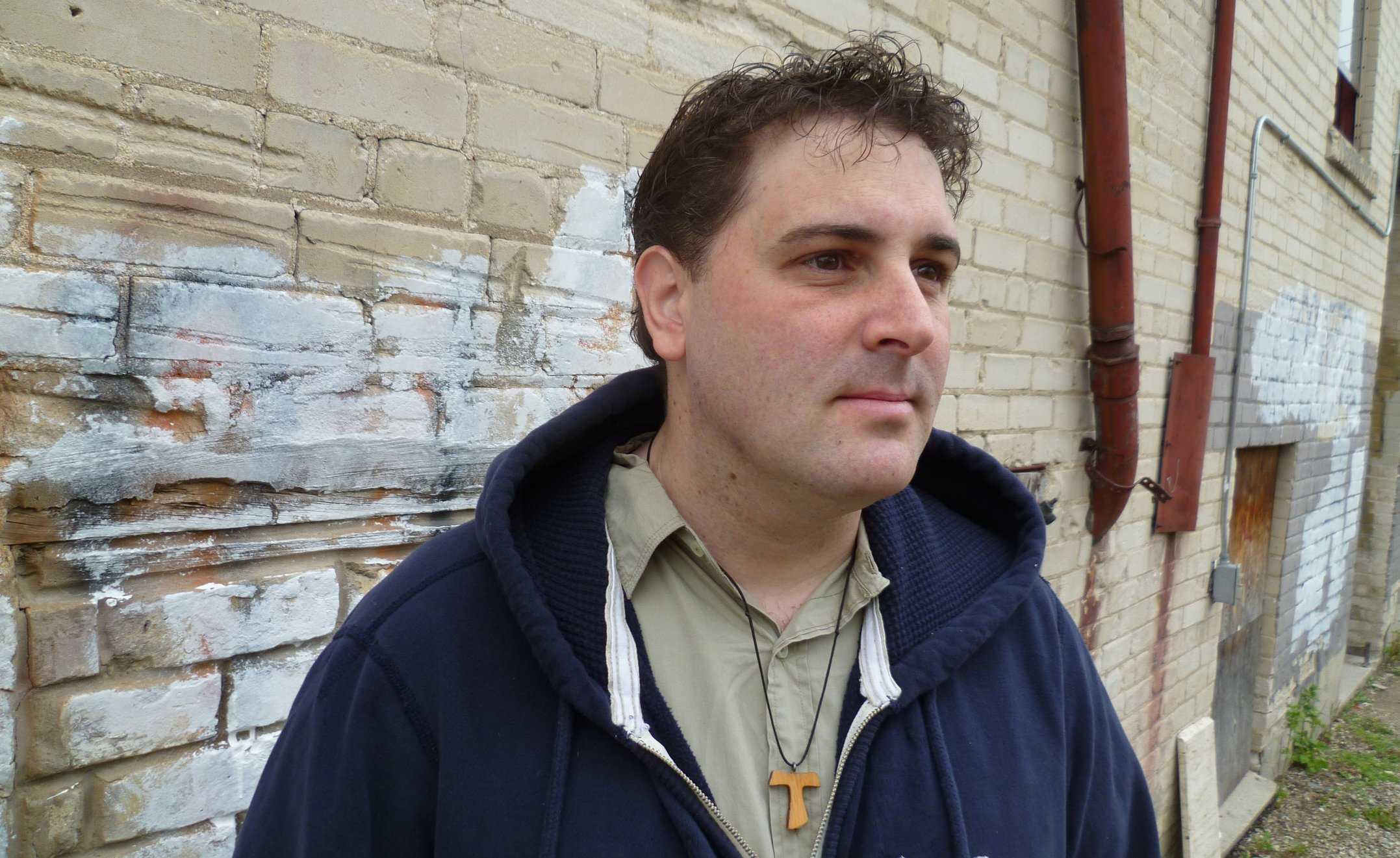Author Jame Arpin-Ricci sat down with me – I mean, we both sat down in our respective countries and wrote to each other – about his new book and the death penalty. Here is our conversation.
1) Who is Jamie Arpin-Ricci in 140 characters?
I am a writer, pastor & community enthusiast who is called to share life alongside the least of these.
2) You have a new novella, The Last Verdict, that has just been published? What is your elevator speech?
“The Last Verdict” is the story of two mothers whose lives collide through a brutal murder – the mother of the murdered daughter and the mother of the man condemned to die for the crime.
3) What’s behind the book that is not easily captured in a quick elevator speech?
Behind the compelling murder mystery novel is the story of real people who have changed my life. Three years ago, the state of Mississippi executed my friend, Matt. Matt and I had been corresponding for some time when his execution took place, sharing a passion for true justice, a deep faith in Christ and a longing to see the death penalty ended. Before he died, Matt asked me to use my skills as a writer to that end. This book is the first step in keeping that promise that I made him.
I wrote “The Last Verdict” in an attempt to humanize the issue of capital punishment in the same way that Matt’s friendship humanized it for me. Whether we support or oppose the death penalty, we all need to see the human dynamics – the real, personal stories of all those involved – and hopefully temper our ideology with a genuine love and compassion that does not deny justice, but that is not rooted in vengeance.
4) You have written several nonfiction books, but this is a work of fiction. What led you to make the change?
My last two books are about the lives of saints – St. Francis of Assisi and St. Patrick of Ireland – and the example their lives can and should have on our own lives today. When people responded positively to those books, it was most often relating to the stories in the writing. There is something powerful and compelling about a well-told story that has the capacity to reach readers in a way no other form of writing seems able.
So often when we discuss or debate issues like capital punishment, we can get caught up in ideas, logic and ideology – all of which have an important place. Yet they can, at times, also distract us from the human component to any story. Fiction can paint a more complex picture for readers, resisting the impulse to generalize and accept caricatures and stereotypes. I wanted to touch both the hearts and the minds of readers, and fiction seemed the best way to do so.
5) You are a pastoral leader at a Franciscan-Anabaptist faith community. I’ll admit, I did a double-take when I read “Franciscan-Anabaptist.” Can you explain that?
You are not alone in that double take. Many of my fellow Mennonites respond in the same way. However, the relationship is a natural one. Early Anabaptist ideas and practices drew deeply from Franciscan movement, elements that are still held in common today: the centrality of Christ and importance of the Sermon on the Mount; lives of communal simplicity and mutual care; a deep devotion to peacemaking and non-violence; and a strong emphasis on the incarnational way of faith expressed in action.
I first came to appreciate St. Francis (and St. Claire, I should add) when I was researching my book on the Sermon on the Mount. I found myself deeply compelled and challenged by these two saints as I lived and served in my own urban neighborhood. Our small church, an inner-city Mennonite congregation, began to explore the Sermon on the Mount through the lens of St. Francis and St. Claire. It transformed us, providing a foundation that has served us ever since. My book, “The Cost of Community: Jesus, St. Francis & Life in the Kingdom” is entirely the story of that journey with Francis through the Sermon.
6) But there’s a Jesuit — not a Franciscan! — in your book. What’s the story there?
As Pope Francis has demonstrated, these two traditions are by no means at odds. However, in “The Last Verdict”, the character of Father Jim is an unapologetic tribute to Father James Martin, SJ. The writings of Father James have been deeply important to my own faith, as well as that of our community.
However, another reason I included a Catholic priest in the novel was because of my friend Matt. Before he was executed, he found a deep and meaningful faith in the Catholic Church. His own priest became an important friend and comforter in his last years in prison. Catholic men and women like this are a common presence among the condemned, and I wanted to honor them for that in this way.
7) You have corresponded with people awaiting the death penalty for a number of years. What do you find is the biggest misconception regarding people on death row?
Civil rights lawyer and author Bryan Stevenson is often quoted as saying, “We are all far more than the worst thing we have ever done.” While I believe in Matt’s innocence, other men that I have written to are admittedly guilty of the crime they were condemned for. Yet, they are so much more than those crimes. They are people with families, dreams, beliefs, hobbies. This does not negate the need for them to face justice, but rather it tempers the extreme and irreversible instinct to kill them, as though that would be, in any way, just.
Additionally, if the state is going to condemn a person to death, they should be sure of guilt beyond any doubt. Many people assume that such unquestionable certainty exists in most cases, when in fact it does not. Consider last year alone.
In 2015, 149 people were exonerated for wrongful convictions, with the average prison stay for these victims of the system being 14 years. Consider that: the number of years wasted in prison from the lives of innocent people in 2015 alone is over 2000 years. And let’s face it, if 149 were exonerated, we can be assured that there were many innocent people who were not. The price is too high to get wrong, especially when it is the poor and racial minorities who are disproportionately represent in these numbers – the very least of these Jesus identified with.
8) You were born in the States but live in Canada, a country that abolished the death penalty in the 1970s. How has this perspective shaped how you view the death penalty in the States or how others have looked at you in your work?
While I am very grateful that Canada abolished the death penalty so many years ago, it is still a part of our recent history. Further, Canada has its own culpability in wrongful convictions and racially biased prosecutions and imprisonment. So even in Canada, the issue is still an important one for me, especially as I take my citizenship in America very seriously.
However, fundamentally the fact remains that “injustice anywhere is a threat to justice everywhere” (Martin Luther King Jr.) Especially as a follower of Jesus, believing that every person is created in the image of God, my commitment to see the death penalty ended is not defined by my nationality or geography.
9) There are many life and justice issues worth fighting for. What might you say to one who does not see abolishing the death penalty at the top of the list?
Without question, my own passion for this issue is rooted in my own sense of vocation and in the relationships that I have built. I would never demand anyone make this (or any) issue the top of their list because it is important to me. Everyone must decide where they put their time and energy with respect to making our world more just – “on earth as it is in heaven,” so to speak.
However, until we choose to reach out and connect with real people who are suffering in the world, how can we hear the voice of God calling us to respond? My challenge, then, is for every person to do what they can to reach out and connect with those who are at the margins of society and victims of injustice. This takes intentionality and commitment. And yet, if we dare to do so, I know that we will be changed for the better as a result.
10) What brings you hope? What keeps you going?
My small, inner-city church, Little Flowers Community, is made up of a rag-tag group of misfits. We are people who live with poverty and addiction. We are a people who have found it difficult to fit into society and the church. We are people who have been on the wrong side of the law and we are people who live with mental illness. Yet, together we live and love together in vulnerability and radical welcome. And in the mess of it all, we have found Christ.
It was this willing vulnerability that helped me be willing to reach out to men on death row. It was this willing and mutual brokenness that helped forge friendships with these men and with their families. That gives me hope. That keeps me going.
— // —
“The Last Verdict” can be found here. A portion of all profits will be donated to Witness to Innocence.


